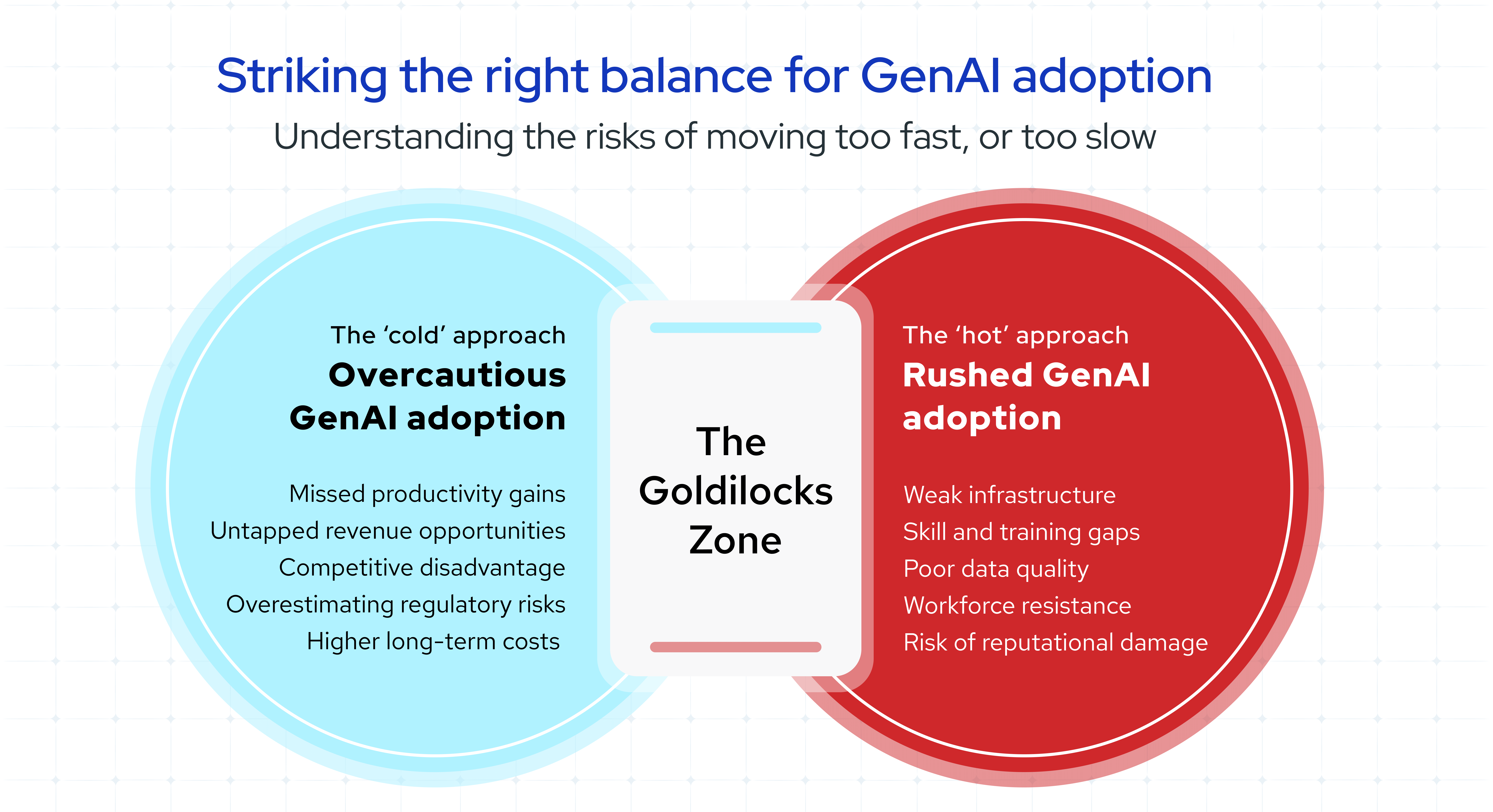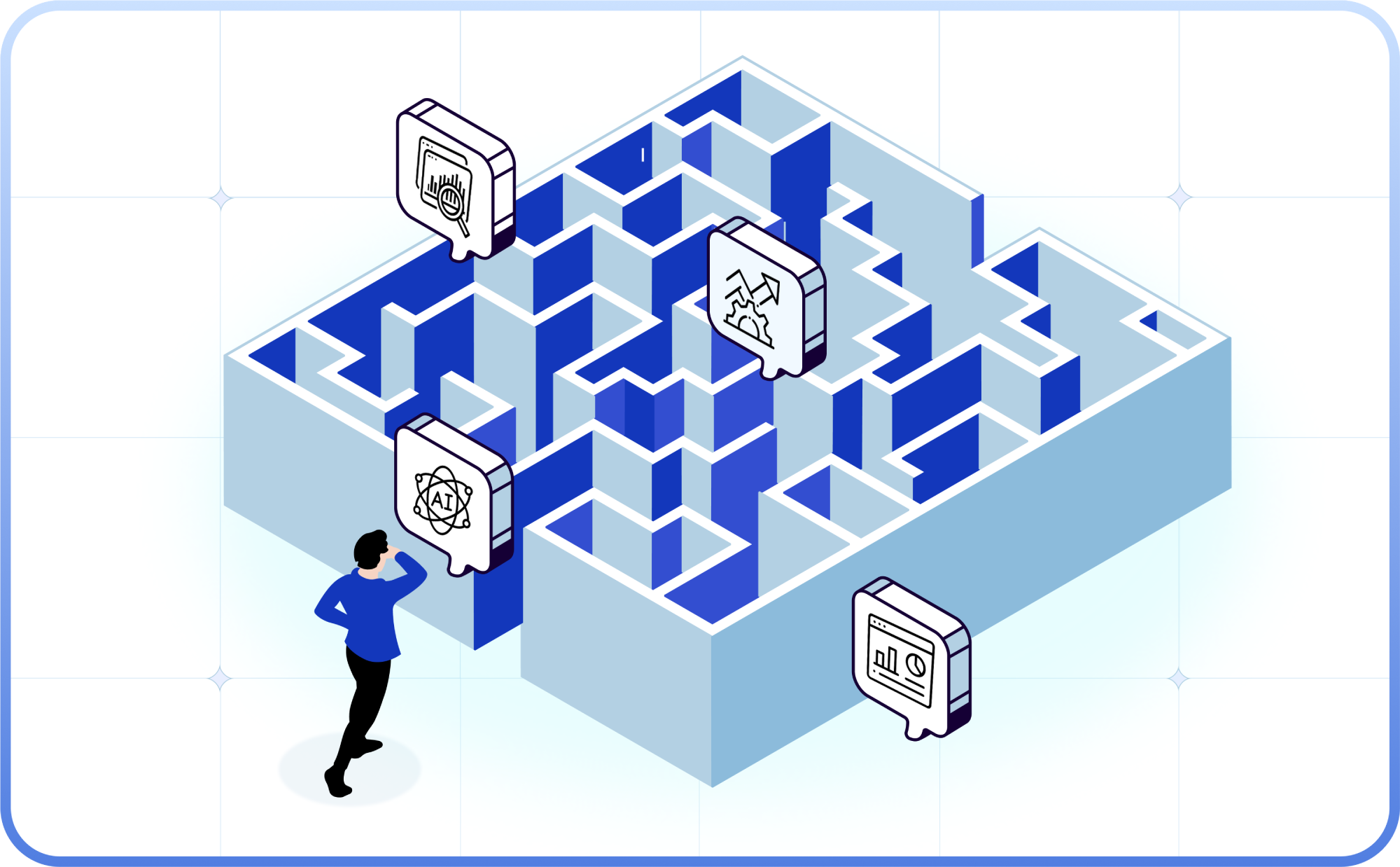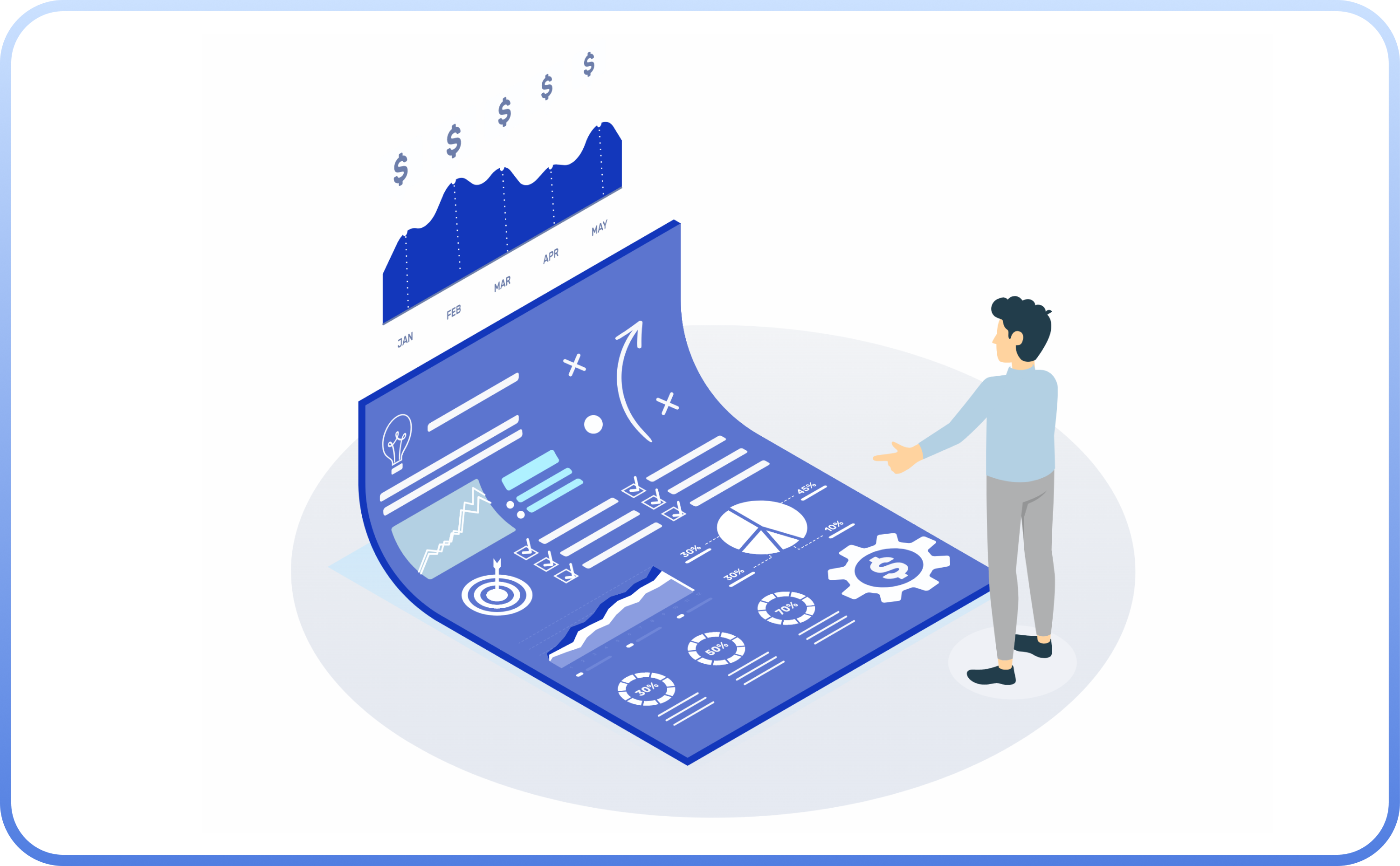Summary
While some companies delay GenAI adoption due to concerns around disruption, compliance, and readiness, others leap in without the right foundations in place. Both these approaches can have deep repercussions. This blog post outlines how organizations can strike the right balance and adopt GenAI with the right pace, creating a clear path for long-term success.
During the 1970s, NASA scientists proposed the concept of “Goldilocks Zone” to describe habitable regions around a star with conditions ‘just right’ for water to exist. In other words, this zone is neither too hot, nor too cold, making it perfect for life to thrive.
This concept is an apt analogy for the current state of generative AI (GenAI) adoption, where organizations must find their ‘Goldilocks Zone’ — the perfect balance between readiness and implementation. Currently, when it comes to embracing GenAI, many organizations exhibit an approach that’s ‘too cold’, either by delaying its adoption or resisting it altogether until it gains greater traction within their industry. Conversely, some organizations take an approach that is ‘too hot’, hastily diving into GenAI without building the necessary infrastructure or expertise, which can lead to significant financial and operational risks.
This lack of balance is evident across industries worldwide. While IDC pegs GenAI spending to reach a whopping $202 billion by 2028*, Gartner predicts 30% of GenAI projects will be abandoned after Proof of Concept (PoC) by the end of 2025**.
The ideal lies somewhere in between — a balanced approach that utilizes GenAI’s immense potential, while ensuring a robust foundation for successful implementation. This blog post explores how organizations can find their Goldilocks Zone — the sweet spot where GenAI adoption is strategic, efficient, and built for long-term success. We’ll explore the challenges and risks of generative AI adoption and understand how companies can ensure readiness, at the right pace and with the right foundation.
The 'cold' approach: Risks of overcautious GenAI adoption
Many organizations are still hesitant to adoption GenAI, as they are apprehensive about the potential disruption it could bring to their established workflows, customer experience, and compliance processes. Additionally, several businesses have major concerns around data security and privacy. These organizations often delay adoption, preferring to wait for clear industry standards and best practices to emerge. However, this hesitation can often have deep repercussions:
- Missed productivity gains: GenAI has immense potential to boost productivity, streamline operations, enhance decision-making, and optimize resource allocation across industries. Businesses that continue to cling to outdated processes, miss out on potential efficiency ga¬ins and cost savings.
- Untapped revenue opportunities: Early adopters of GenAI can unlock new revenue streams through AI-driven products, services, content, and customer experiences. Organizations that delay adoption risk losing potential customers and business opportunities.
- Competitive disadvantage: Organizations that hesitate to adopt GenAI may fall behind AI-savvy competitors who leverage AI-driven efficiencies, automation, and innovation to strengthen market leadership. Waiting too long can lead to lost market share and diminished relevance.
- Overestimating regulatory risks: Many companies are hesitant to take the first step towards GenAI adoption until clear regulatory guidelines and frameworks are established in their domain. While regulatory concerns are valid, by waiting too long, companies may find themselves scrambling to comply with evolving regulations rather than proactively addressing them.
- Higher costs in the long run: GenAI projects often demand substantial upfront investment and ongoing costs for maintenance, scaling, and updates. Organizations having initial reservations may eventually rush implementation to catch up, resulting in increased expenses, inefficient rollouts, and a steep learning curve.
The 'hot' approach: Risks of rushed GenAI adoption
On the other hand, rushing into GenAI without adequate preparedness and a clear action plan leads to its own set of challenges. Eager to see quick results, many companies often underestimate the infrastructure, expertise, and governance required for effective implementation. This cascades into execution loopholes, which in turn impact GenAI ROI and business outcomes. Let’s look at some of the risks and implications of hasty GenAI adoption:
- Weak infrastructure foundation: Rushing into GenAI without a solid operational backbone can quickly derail even the most promising initiatives. Without scalable data pipelines, robust compute infrastructure, and the ability to integrate GenAI into existing systems, organizations risk poor performance, fragmented workflows, and unreliable outputs. While an infrastructure overhaul may not be imminent on day one, ignoring foundational readiness often leads to rework, downtime, and stalled projects.
- Skill and talent gaps: GenAI success doesn’t hinge on hiring large teams — in fact, most early failures stem from not enabling existing talent. Skipping basic enablement for prompt design, model evaluation, or integration leads to poor adoption and results. Without a thoughtful plan for appropriate upskilling, GenAI efforts can fizzle out before they scale.
- Poor data quality: Organizations lacking robust data engineering and management practices often face issues with data quality, which can significantly impact the accuracy, performance, and reliability of GenAI models. Data silos, fragmented tools, and accessibility issues can derail GenAI projects.
- Workforce resistance: Introducing GenAI into the workplace can feel unsettling for employees, especially when they’re unsure how it will impact their roles. Some may worry about job security, while others might feel unprepared to work with AI-driven tools. To ease this transition, organizations need to focus on transparency, training, and support — helping employees understand how GenAI can complement their roles rather than replace them.
- Risk of reputational damage: Failing to address potential security risks or ethical considerations such as data privacy and bias in GenAI models can harm an organization’s reputation and escalate into legal issues. Moreover, content created using GenAI may pose several ethical risks, including copyright violations, misinformation, and bias concerns.

A roadmap for generative AI adoption in 2025
GenAI adoption is not a race, it’s a transformative journey that needs to balance an organization’s appetite for innovation with their ability to streamline operations and manage risks. Here’s a closer look at how you can strike the right balance:
1. Map GenAI goals to business outcomes
Rather than keeping tech as the starting point, GenAI adoption should be tied to tangible business outcomes, with measurable KPIs for each goal. Instead of simply experimenting, identify specific business challenges that GenAI can help solve, such as:
- Delivering faster customer support across platforms
- Improving audience targeting through hyper-personalized marketing content
- Reducing the time and effort involved in generating reports
2. Prioritize use cases that are high-value and low-friction
Not every use case needs deep model training or full automation. Start out with simpler ones that:
- Can be built leveraging your existing data and tools
- Do not require immediate regulatory approval or model auditability
- Have an established feedback loop with a clear plan for consistent improvement
For instance, internal copilots, document summarization, or enterprise search are better starting points than complex, customer-facing GenAI applications.
3. Lay strong foundations
Ensure adequate GenAI readiness across your data stack, infrastructure, and teams. This includes:
- Data pipelines that feed GenAI with clean, contextual, and up to date data
- Clear governance around data access, version control, monitoring, auditing
- Building appropriate skills across business and technical teams to ensure responsible usage and scaling
4. Evolve capabilities incrementally
Treat GenAI adoption as an iterative capability — not a one-off implementation.
- Start with GenAI PoCs focused on business value, rather than novelty
- Move from pilot to production only when output quality is consistent and risks are controlled
- Embed GenAI into critical production systems after experiencing success with the above
This incremental approach enables course-correction, builds confidence among teams, and paves the path for maximum ROI.
How Gathr.ai helps strike the right balance
Gathr.ai is purpose-built to help organizations take a balanced, real-world approach to GenAI — avoiding the pitfalls of both slow starts and rushed rollouts. It doesn’t matter where you are in your data + AI journey — Gathr.ai meets you there. No migrations, no rewrites — just faster outcomes on your existing stack.
With Gathr.ai, you can:
- Unlock intelligence on top of your existing data estate: No migrations, rewrites, or rip-and-replace. Just smarter use of what you already have.
- Unify and prepare multi-modal data for intelligence: Ingest structured, unstructured, batch, and real-time data. Enrich, validate, and transform it into trusted, high-quality assets.
- Deliver complete data + AI applications: Go from raw data to production-grade applications — from pipelines to AI integration to consumer-facing experiences.
- Build and deploy your way, with full control: Build with prompts, visual interface, or code when needed. Use any AI model — OpenAI, Vertex, Bedrock, Anthropic, etc. Run anywhere — cloud, on-prem, hybrid, or containers.
With Gathr.ai, you don’t need to worry about stalled PoCs or hasty launches. You can realize your AI goals at your pace, and on your terms. To learn more, book a demo today
Sources:
*Worldwide Spending on Artificial Intelligence Forecast to Reach $632 Billion in 2028, According to a New IDC Spending Guide
**Gartner Predicts 30% of Generative AI Projects Will Be Abandoned After Proof of Concept By End of 2025


 Redshift
Redshift MS SQL
MS SQL  MySQL
MySQL PostgreSQL
PostgreSQL Trino
Trino Starburst
Starburst
 All resources
All resources





